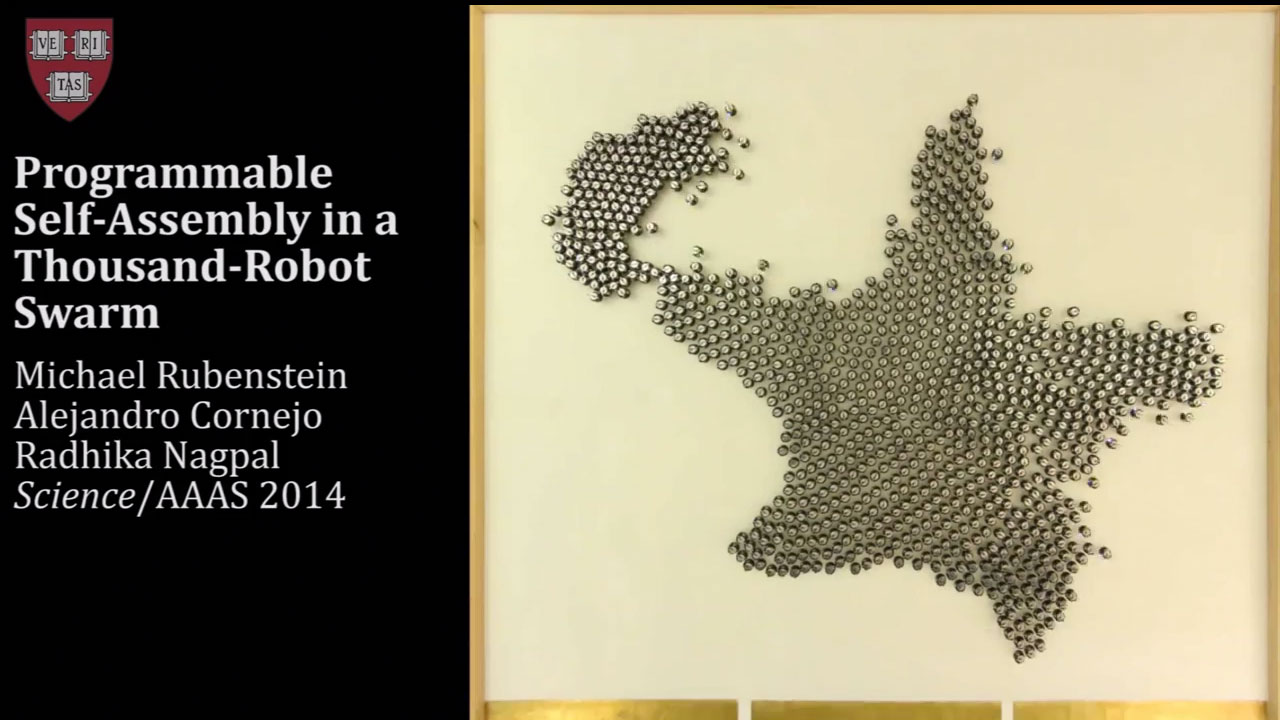Scientists at Harvard University have created a colony of robots that mimic self-organized systems in nature. Their 1,000 robots — dubbed collectively as the “kilobot” — is the largest self-organizing group of robots ever created. Previously, researchers had only used up to 100. This was accomplished by simplifying the designs of the robots to include only their essential qualities. Navigating together on three stick-legs with two vibrating motors, the individual machines communicate with each other via infrared light, LEDs in changing colors and ambient light censors. ArsTechnica explains:
No GPS-like system was available for them to know their location in the environment. Instead, robots had to form a virtual coordinate system using communication with, and measured distances to, neighbors. Manual manipulations of individual robots had to be minimal; imagine pressing the “on/off” button on 1,024 robots. The robots also needed to be easy to charge and reprogram. Charging was initiated by sandwiching all the robots between two conductive surfaces. Reprogramming was done wirelessly through an overhead controller that would send information to all robots about experiments to run.
Only very limited “seed robots” are used to send messages to the majority of the rest. The seed bots give the others coordinates which indicate how far they are from where they need to be. Then, they form an edge and follow it, layering themselves to create the final shape.
A method for avoiding accidents was programmed into the algorithm, allowing the robots to rely issues to each other. The algorithm also allowed for some flexibility, so the swarm wouldn’t get caught up if one robot didn’t end up in the exact right placement. Using these techniques, the kilobot formed itself into shapes like a starfish and the letter “K.”



